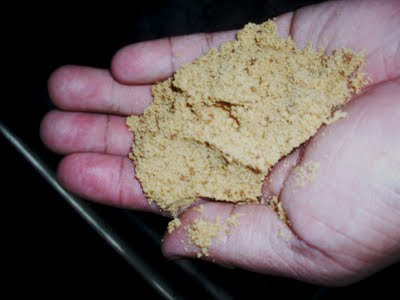By Niño Manaog
University Extension Associate
Capiz State University
Held at the Ivisan Farmers Information and Technology Services (FITS) Center in Poblacion, Ivisan, Capiz, the livelihood training formed part of the two day Vegetable Production and Post-Harvest Handling Training led by the Office of the Municipal Agriculturist (OMA) of Ivisan under the leadership of Municipal Agriculturist Letecia Andrada and Agricultural Technologist Giovannie Lawag.
Among others, Eduardo Navarra briefed the participants on the disadvantages of commercial modern farming and stressed on the advantages of organic farming, stressing on how to best equip and protect the soil for quality production.
Among others, Eduardo Navarra briefed the participants on the disadvantages of commercial modern farming and stressed on the advantages of organic farming, stressing on how to best equip and protect the soil for quality production.
Navarra, CapSU Techno Gabay team leader, highlighted the projects of Ramon Peñalosa, Magsasaka Siyentista (MS) of fits opa Negros Occidental who practices integrated natural farming and produces his own insecticides, pesticides and similar other technologies in his farms in Victorias City and Manapla, Negros Occidental.
Navarra also suggested that farmers should make their own foliar fertilizers like Dao FITS Center in Dao, Capiz whose focus commodity (indigenous microorganism concoctions) very well complements and assists organic farming.
Navarra also urged the participants to form a group of farmers in their little communities who would focus on producing organic vegetables and crops because there will always be demand for them. He likewise assured that the local government of Ivisan led by Mayor Felipe Neri Yap will always welcome such initiatives if only to serve the members of the locality.
The lecture orientation, along with some demonstration of some farming materials and technologies, drew favorable response from a number of farmers.
 Sixty-year-old Danilo Obrigue who maintains some 1.5 hectares of palay and 4,000 sq.m. planted to vegetables said he plans to try organic farming because it proves economical and friendly to people’s health. The former barangay captain of Ondoy said that vegetable growers in their locality were inspired by the type of farms they saw in Palayamanan in barangay Mianay that they would want to replicate it in their own barangay. For Obrigue, this is now the time to inspire others to pursue organic farming.
Sixty-year-old Danilo Obrigue who maintains some 1.5 hectares of palay and 4,000 sq.m. planted to vegetables said he plans to try organic farming because it proves economical and friendly to people’s health. The former barangay captain of Ondoy said that vegetable growers in their locality were inspired by the type of farms they saw in Palayamanan in barangay Mianay that they would want to replicate it in their own barangay. For Obrigue, this is now the time to inspire others to pursue organic farming.Seventy-one year old Mercedes Aldea, who has been farming in Sitio Balangasan in Ondoy since 1964, saw the ease in practicing organic farming. It is pasil (easy) because it makes use of materials that can be found in our very surroundings. She herself uses rice straws and chicken manure for compost and fertilizer and plans to maintain the same in her one-half hectare land planted to palay and banana. Aldea also produces patola and vegetables which she periodically sells in Ivisan market.
 Meanwhile, 54-yr-old Avelina Benosa who has a 9,000 sq.m.- rented piece of land planted to coconut, banana and native ginger also wants to produce vegetables. For this purpose she considers sustaining their farm using both commercial and organic farming. For Benosa, she would adapt any practice that would best add to her productivity.
Meanwhile, 54-yr-old Avelina Benosa who has a 9,000 sq.m.- rented piece of land planted to coconut, banana and native ginger also wants to produce vegetables. For this purpose she considers sustaining their farm using both commercial and organic farming. For Benosa, she would adapt any practice that would best add to her productivity. The two-day initiative also covered lectures and demonstrations on seed selection and site selection, integrated nutrient management, integrated pest management, post-harvest handling practices and marketing.











